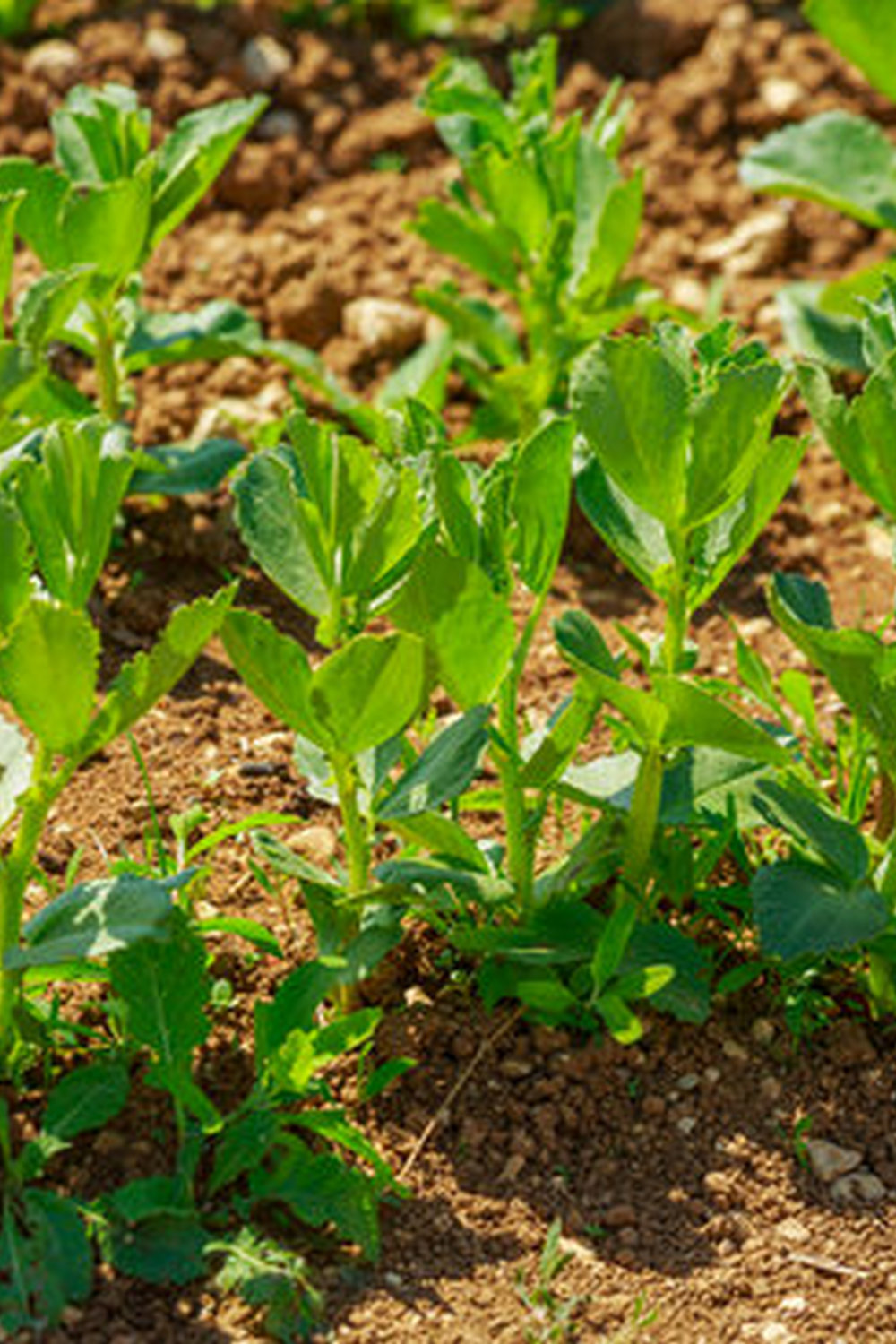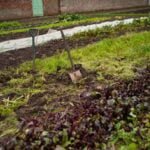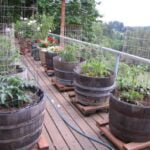Are you looking for ideas for small vegetable gardens? Whether you have limited outdoor space or simply want to maximize the productivity of your garden, there are numerous benefits to growing your own vegetables in a small-scale setting. From selecting the right location to choosing the best vegetables for limited space, this article will explore various tips and techniques to help you create a successful small vegetable garden.
When considering a small vegetable garden, it’s important to carefully select the right location for optimal growth and productivity. Factors such as sunlight, soil quality, and access to water will play a crucial role in the success of your garden. Additionally, choosing the best vegetables for limited space is vital in ensuring that you make the most out of your available area.
If traditional gardening beds are not feasible for your small space, container gardening offers a versatile and flexible alternative. This method allows you to grow a wide variety of vegetables in pots, hanging baskets, or other containers. Furthermore, vertical gardening provides an innovative way to utilize vertical space and increase the yield of your small vegetable garden.
Stay tuned as we delve into each aspect of small vegetable gardening and provide valuable insights on maximizing productivity in limited spaces. Whether you’re new to gardening or looking for ways to enhance your current setup, we’ve got you covered with practical advice and ideas for creating a thriving small vegetable garden.
Selecting the Right Location for Your Small Vegetable Garden
When it comes to setting up a small vegetable garden, one of the most crucial decisions you’ll need to make is choosing the right location. The success of your garden depends greatly on its placement, as this will determine access to sunlight, water, and other essential resources.
Sunlight Requirements
Most vegetables require at least 6 hours of direct sunlight daily to thrive. When selecting a location for your small vegetable garden, consider areas in your yard or balcony that receive the maximum amount of sunlight throughout the day. South-facing locations are ideal for optimal sun exposure.
Accessibility to Water
Another important factor to consider when choosing a location for your small vegetable garden is accessibility to water. Since vegetables need consistent moisture to grow and produce high yields, it’s essential that you have easy access to a water source – whether it’s a nearby hose or watering can.
Soil Quality and Drainage
Lastly, assess the soil quality and drainage in potential locations for your small vegetable garden. It’s important that the soil is well-draining and rich in organic matter to support healthy plant growth. Consider conducting a soil test or amending the soil with compost if necessary before establishing your garden.
By carefully considering these key factors when selecting the right location for your small vegetable garden, you can set yourself up for success and ensure that your plants have everything they need to thrive and produce a bountiful harvest.
Choosing the Best Vegetables for Limited Space
When it comes to small vegetable gardens, choosing the right vegetables can make a big difference in the success of your garden. With limited space, it’s important to select vegetables that are well-suited for compact growing conditions and that also offer a high yield. Here are some ideas for small vegetable gardens when it comes to selecting the best vegetables for limited space.
Herbs
Herbs are an excellent choice for small vegetable gardens because they can easily be grown in pots or containers, making them ideal for limited space. Herbs like basil, cilantro, and parsley are not only compact but also versatile in their use in cooking. Plus, they add a beautiful touch of green to your garden.
Leafy Greens
Vegetables like lettuce, spinach, and kale are perfect for small gardens due to their ability to grow close together. These leafy greens can be easily grown in raised beds or containers and offer a continuous harvest throughout the growing season.
Tomatoes
While tomatoes do require some vertical support as they grow, there are many compact and bush varieties that are well-suited for small spaces. Cherry tomatoes, like “Patio,” “Tiny Tim,” and “Balcony” tomatoes, are great options for small vegetable gardens as they produce an abundance of fruit on compact plants.
By choosing the right vegetables for your small garden, you can maximize your space while still enjoying a bountiful harvest. Whether you opt for herbs, leafy greens, or compact tomato varieties, there are plenty of options available to suit the needs of your small vegetable garden.
Container Gardening
When it comes to small vegetable gardens, space can be a limiting factor. However, container gardening offers a practical and efficient solution to maximize the use of limited space. Containers are versatile and can be placed on patios, balconies, or even windowsills, making them perfect for urban dwellers or those with limited outdoor space.
The key to successful container gardening lies in choosing the right containers, soil, and plants. When selecting containers for your small vegetable garden, opt for ones that are large enough to accommodate the root system of the plants you wish to grow. Additionally, make sure that the containers have drainage holes to prevent waterlogged soil, which can lead to root rot.
In terms of soil, it’s essential to use a high-quality potting mix that is well-draining and nutrient-rich. Avoid using regular garden soil, as it tends to compact in containers and may not provide adequate aeration for plant roots. Finally, when it comes to choosing vegetables for container gardening, look for varieties that are well-suited for growing in confined spaces. Some excellent options include tomatoes, peppers, lettuce, carrots, radishes, and herbs such as basil and parsley.
According to a study conducted by the University of Illinois Extension, container vegetable gardens can yield just as much produce as traditional in-ground gardens if they are properly cared for and maintained. With careful planning and attention to detail, container gardening can be a rewarding and productive way to grow your own fresh produce in a small space.
| Container Gardening Tips | Data |
|---|---|
| Choose large enough containers | Accommodate plant roots |
| Use high-quality potting mix | Well-draining and nutrient-rich |
| Select vegetables suited for confined spaces | Tomatoes, peppers, lettuce, carrots |
Vertical Gardening
When space is limited, vertical gardening can be a game-changer for small vegetable gardens. By utilizing the vertical space, gardeners can maximize their growing area and increase their vegetable yield. There are several creative ways to implement vertical gardening in a small space, such as using trellises, hanging planters, and wall-mounted containers.
Here are some ideas for small vegetable gardens to make the most of vertical gardening:
- Trellises: Erecting trellises in your garden is an excellent way to grow vining vegetables such as tomatoes, cucumbers, and peas. These plants can be trained to grow vertically, saving valuable ground space while providing good air circulation and easier access for harvesting.
- Hanging Planters: Hanging planters are ideal for growing herbs and small vegetables like lettuce, radishes, and strawberries. They can be hung from walls or ceilings to free up floor space while adding a decorative element to the garden.
- Wall-Mounted Containers: Vertical gardens can also be created by attaching containers to walls or fences. This method is perfect for growing compact vegetables like peppers, eggplants, and dwarf varieties of beans. It’s an efficient way to use empty wall space for planting without taking up precious ground area.
Incorporating vertical gardening techniques into small vegetable gardens not only maximizes growing space but also adds visual interest to the garden environment. With the right planning and creativity, even the smallest of spaces can yield an abundant harvest of fresh home-grown vegetables.
Companion Planting
One popular example of companion planting in small vegetable gardens is the Three Sisters gardening method, which involves growing corn, beans, and squash together. The corn provides support for the beans to climb, while the beans replenish the soil with nitrogen. Additionally, the low-lying squash leaves help to suppress weeds and retain moisture in the soil. This symbiotic relationship between the three crops allows them to thrive when planted together.
Another beneficial combination for small vegetable gardens is planting aromatic herbs such as basil or oregano alongside vegetables like tomatoes or peppers. These herbs can help repel pests that may be harmful to your vegetables, reducing the need for chemical pesticides. Additionally, certain herbs can attract pollinators like bees and butterflies, which are essential for the successful reproduction of many fruiting vegetables.
Incorporating companion planting techniques into your small vegetable garden not only promotes healthier growth but also adds visual interest and diversity to your garden space. With careful planning and consideration of plant compatibility, you can create a harmonious ecosystem that maximizes productivity and minimizes potential issues in your small vegetable garden.
| Benefit of Companion Planting | Example |
|---|---|
| Pest Control | Planting herbs alongside vegetables helps repel pests |
| Space Maximization | The Three Sisters method optimizes space by growing complementary crops together |
| Healthy Growth | Create a balanced ecosystem that promotes healthier growth in small vegetable gardens |
Tips for Managing Pests and Diseases in Small Vegetable Gardens
Pests and diseases can pose a significant challenge for small vegetable gardens, but with the right strategies, you can effectively manage and minimize their impact on your plants. One of the most important steps in pest and disease management is to maintain a healthy garden environment.
This includes providing adequate water, sunlight, and nutrients to promote strong and resilient plants that are better able to resist pests and diseases. Additionally, proper spacing between plants can improve air circulation and reduce the likelihood of disease development.
Another key strategy for managing pests in small vegetable gardens is to regularly monitor your plants for any signs of infestation or disease. Early detection allows for prompt intervention, which can prevent further spread and damage. Consider conducting regular inspections of your garden and familiarize yourself with common pests and diseases that may affect the specific vegetables you are growing. This knowledge will enable you to take proactive measures to address any issues before they escalate.
When it comes to pest control in small vegetable gardens, organic methods are often preferred as they minimize potential harm to beneficial insects, wildlife, and the environment. For example, introducing natural predators like ladybugs or parasitic wasps can help keep pest populations in check without the need for harmful chemicals.
Additionally, utilizing physical barriers such as row covers or netting can protect your plants from pests like aphids or caterpillars while still allowing air, light, and moisture to reach the plants.
By implementing these tips for managing pests and diseases in small vegetable gardens, you can help ensure a thriving and bountiful harvest while minimizing the use of synthetic pesticides or harmful chemicals. With careful attention and proactive measures, you can maintain a healthy garden ecosystem that supports the growth and productivity of your vegetables.
Harvesting and Enjoying the Fruits of Your Labor
After all the hard work put into your small vegetable garden, it’s time to reap the rewards of your labor. With a successful harvest comes the satisfaction of enjoying fresh, home-grown produce and the knowledge that you’ve been able to sustainably source food from your own backyard. Here are some tips for maximizing your small vegetable garden success:
- Harvest at the Right Time: It’s important to harvest your vegetables at the right time to ensure optimal flavor and texture. Be sure to research the specific harvesting times for each type of vegetable in your garden.
- Proper Storage: Once you’ve harvested your vegetables, it’s essential to store them properly to maintain freshness and prevent spoilage. Consider investing in storage containers or canning equipment to preserve your produce for future use.
- Utilize Your Harvest: Get creative with how you use your home-grown produce. Whether it’s creating delicious salads, soups, or sauces, there are countless ways to incorporate your harvest into meals for you and your family.
Ultimately, the success of a small vegetable garden is not just about growing a bountiful harvest but also enjoying and appreciating what you’ve grown. By following these tips, you can make the most out of your small vegetable garden and relish in the satisfaction of enjoying fresh, flavorful produce that you cultivated with care.
Conclusion
In conclusion, small vegetable gardens offer a multitude of benefits beyond just providing fresh produce. They can serve as a therapeutic and rewarding hobby, as well as a sustainable and cost-effective way to ensure a healthy diet. By maximizing space through container gardening, vertical gardening, and companion planting, even those with limited outdoor space can enjoy the satisfaction of growing their own food.
As we have explored in this article, small vegetable gardens thrive when given the right location and thoughtful selection of vegetables best suited for limited space. With proper care and attention to managing pests and diseases, anyone can successfully yield a bountiful harvest from their small garden. Whether it’s enjoying the taste of homegrown tomatoes or the pride in reducing one’s environmental footprint, the rewards of small vegetable gardening are truly endless.
In embracing the rewards of small vegetable gardening, it’s important to remember that success doesn’t always come easily or instantly. It may take trial and error to find what works best for your specific growing conditions and available space.
But with dedication, innovation, and a willingness to learn from both successes and setbacks, anyone can revel in the joy of nurturing a thriving small vegetable garden. So don’t be discouraged by limited outdoor space – with these ideas for small vegetable gardens, you too can enjoy the fulfilling experience of growing your own fresh produce right at home.
Frequently Asked Questions
How Do You Layout a Small Vegetable Garden?
To layout a small vegetable garden, you should start by choosing the right location with plenty of sunlight and good drainage. Use raised beds or containers to make the most of limited space, and consider vertical gardening to maximize growing area.
What Vegetables Are Best for Small Gardens?
The best vegetables for small gardens are those that can be grown in containers or in narrow spaces. Some good options include tomatoes, peppers, lettuce, spinach, radishes, green onions, and herbs like basil and cilantro. Compact varieties of these plants work especially well in small spaces.
How Do You Maximize a Small Vegetable Garden?
Maximizing a small vegetable garden involves careful planning and efficient use of space. Consider interplanting compatible crops, using trellises or stakes for vertical growth, and succession planting to ensure a continuous harvest throughout the season. Regular maintenance like pruning and proper watering also helps optimize productivity in a limited area.

If you’re looking to get into vegetable gardening, or are just looking for some tips on how to make your current garden better, then you’ve come to the right place! My name is Ethel and I have been gardening for years. In this blog, I’m going to share with you some of my best tips on how to create a successful vegetable garden.





